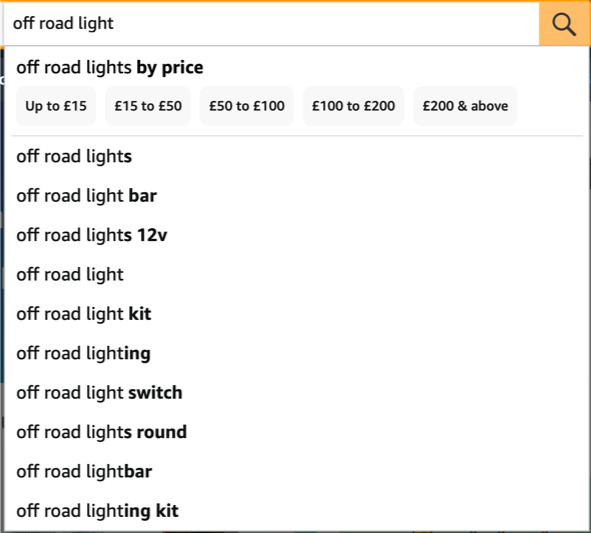Amazon is a crowded market place, and carving out your niche can be quite the challenge. Despite this, with the Amazon platform being behind 10 per cent of all European Retail Sales and still growing (by more than 40 per cent, year on year) your business likely cannot afford to invest in optimising your Amazon presence.
1. Explore a Strategy for Gaining Reviews
Amazon use both quality and quantity of reviews to influence product rankings (and Sales Rank, as explained here). There are four main strategies you can employ yourself:
- Use the “Request Review” button
- Personalised Emails
- Product Packaging Insert
- Encourage reviews in exchange for giveaway entries
And two faster routes Via Amazon which have costs associated with them:
- Get involved in the Early Reviewer Programme (through Amazon)
- Get involved in the Vine Programme (though Amazon)
Using the “request” button is the quickest and simplest thing to do if you’re not yet actively chasing reviews. Just view your sold product order details, and click the button - Amazon then contact the buyer and encourage them to leave a review.

Personalising an email to specific customers is the next best approach. Remember to keep emails friendly, professional and most importantly, do not break Amazon’s rules on gaining reviews.
Next, try leaving an insert in your product packaging if you’re self-fulfilling orders. A simple insert asking kindly for your customer to leave a review can be just enough to get them to come back and rate your product and service.
Finally, incentivising reviews with a giveaway entry doesn’t appear to be against Amazon’s rules. You can combine this approach with either personalised emails or inserts, and rewards loyal customers who repeat buy.
2. Choose Better Keywords
Keywords form the basis of all Amazon rankings, so selecting the right keywords (and continuously reviewing them) is an important step in the optimisation process.
To uncover the best, competitive keywords you can get ideas from:
- Amazon’s suggestions in the search box when you type related keywords
- The keywords rival best selling products are using in their titles and descriptions
- Keywords that related products are using (those that would normally sell alongside your product)

The best keywords will be those that appear most commonly across those products and searches. If you’ve exhausted these methods, you can utilise third party tools, for instance, Reverse ASIN tools, to uncover the keywords that similar products are most often appearing for. If you still need some guidance, a UK Amazon Agency can offer you content services that include keyword research for Amazon product optimisation.
3. Crafting Winning Product Titles
Amazon product titles are quote often the first thing a customer will see (alongside your product’s lead image) when making a search on Amazon. Not only do the keywords need to have decent search volumes, and reflect what the end user is actually looking for, but also needs to be concise (within 80 characters ideally, although Amazon allows up to 250 characters).
Some essential title guidelines are:
- Use a capital letter at the start of each word (aside words like if, a, on, with etc.).
- Use numbers (e.g. 2) over spelling numbers with letters (e.g. Two).
- Use Size and Colours variations only in the titles of child ASINs, not the main titles.
- Do not use ALL CAPS
- Never use any words on Amazon’s restricted list(s)
4. Detail in the Description
Similar to your titles, Amazon allows you a limited character count for crafting your product descriptions. You’ll want to approach your keyword choices for descriptions in the same way as titles - review the common keywords between competitor products, competitor best sellers and those items that normally sell alongside your products. Weave those common keywords into you product descriptions.
In addition, you will need to make sure your descriptions are:
- Aimed at the customer personas you’re targeting
- Outline the benefits of your product, not just it’s features
- Present product information in a clear, concise way, e.g. using bullet points
5. Supercharge your Imagery
Amazon gives you slots for up to 9 images (including your primary, or “lead” image). Your primary image must be in a perfectly square aspect ratio, and display the product on a white background - this is an absolute requirement.
However, Amazon allows you to use your other image slots more creatively. Think about included images that:
- Display the product from different angles
- Overlay text to show off product features and benefits
- Demonstrate the product in use
- Represent the product size and dimensions
- Show of the product packaging
